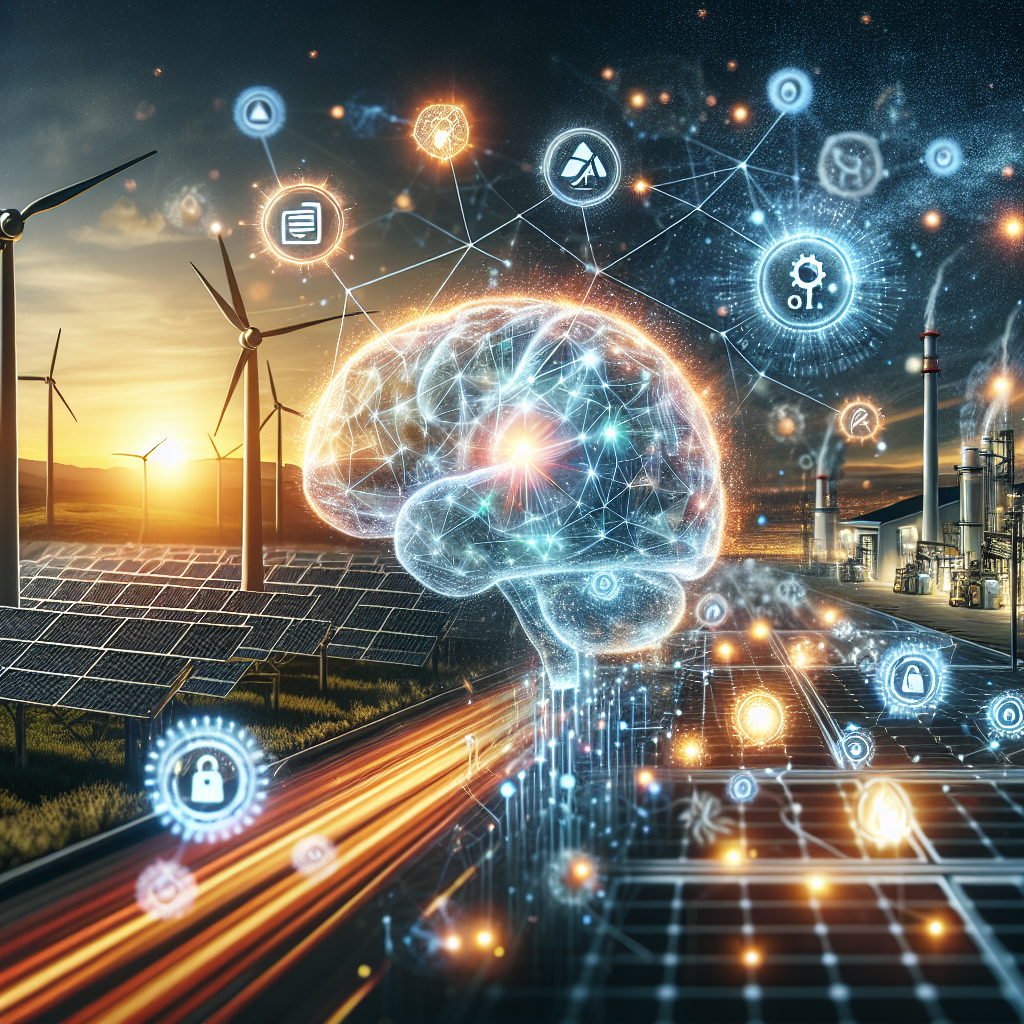In recent years, there has been a growing interest in integrating artificial intelligence (AI) and the Internet of Things (IoT) into smart grids for renewable energy. Smart grids are modern electricity networks that are capable of integrating renewable energy sources such as solar, wind, and hydro power. These grids use advanced technologies to monitor, control, and optimize the generation, distribution, and consumption of electricity in a more efficient and sustainable manner.
AI and IoT technologies have the potential to revolutionize the way smart grids operate by enabling real-time monitoring, predictive maintenance, and intelligent decision-making. By combining the power of AI algorithms with IoT sensors and devices, smart grids can become more resilient, reliable, and flexible, while also reducing costs and carbon emissions.
One of the key benefits of integrating AI and IoT into smart grids is the ability to optimize energy production and consumption in real-time. AI algorithms can analyze vast amounts of data collected by IoT sensors to predict energy demand, optimize generation schedules, and balance supply and demand in a more efficient way. This can help reduce energy waste, lower operating costs, and improve the overall performance of the grid.
Another advantage of AI and IoT integration is the ability to improve grid reliability and resilience. By monitoring the health and performance of grid assets in real-time, AI algorithms can detect potential issues before they escalate into major failures. This proactive approach to maintenance can help prevent outages, reduce downtime, and improve the overall reliability of the grid.
Furthermore, AI and IoT technologies can enable smart grids to support the integration of renewable energy sources at a larger scale. By optimizing the use of solar, wind, and other renewable resources, smart grids can reduce the reliance on fossil fuels, lower carbon emissions, and promote a more sustainable energy system.
In addition to optimizing energy production and consumption, AI and IoT can also enable new services and business models in the energy sector. For example, AI-powered energy management systems can help consumers monitor their energy usage, optimize their energy consumption patterns, and even sell excess energy back to the grid. This can empower consumers to take control of their energy usage, reduce their bills, and contribute to a more sustainable energy future.
Despite the numerous benefits of integrating AI and IoT into smart grids for renewable energy, there are also challenges that need to be addressed. One of the main challenges is the interoperability of different devices, sensors, and systems in the grid. To fully leverage the potential of AI and IoT, it is important to ensure that all components of the grid can communicate with each other seamlessly and securely.
Another challenge is the potential cybersecurity risks associated with AI and IoT technologies. As smart grids become more interconnected and digitized, they also become more vulnerable to cyber attacks. It is crucial to implement robust cybersecurity measures to protect the grid from potential threats and ensure the integrity and confidentiality of the data collected and processed by AI and IoT systems.
In conclusion, integrating AI and IoT into smart grids for renewable energy has the potential to transform the energy sector and accelerate the transition to a more sustainable and efficient energy system. By leveraging the power of AI algorithms and IoT sensors, smart grids can optimize energy production and consumption, improve grid reliability and resilience, and enable new services and business models. However, it is essential to address the challenges of interoperability and cybersecurity to fully realize the benefits of AI and IoT in smart grids.
FAQs:
1. What is the role of AI in smart grids for renewable energy?
AI plays a crucial role in smart grids by enabling real-time monitoring, predictive maintenance, and intelligent decision-making. AI algorithms can analyze vast amounts of data collected by IoT sensors to optimize energy production and consumption, improve grid reliability, and support the integration of renewable energy sources.
2. How does IoT technology benefit smart grids?
IoT technology enables smart grids to collect data from various devices and sensors in real-time, allowing for better monitoring, control, and optimization of the grid. By connecting different components of the grid, IoT technology can improve efficiency, reliability, and resilience, while also enabling new services and business models.
3. What are the main challenges of integrating AI and IoT into smart grids?
Some of the main challenges of integrating AI and IoT into smart grids include interoperability issues, cybersecurity risks, and data privacy concerns. It is important to address these challenges to ensure the seamless and secure operation of AI and IoT systems in smart grids.
4. How can consumers benefit from AI and IoT in smart grids?
Consumers can benefit from AI and IoT in smart grids by monitoring their energy usage, optimizing their consumption patterns, and even selling excess energy back to the grid. This can help consumers reduce their bills, take control of their energy usage, and contribute to a more sustainable energy future.

